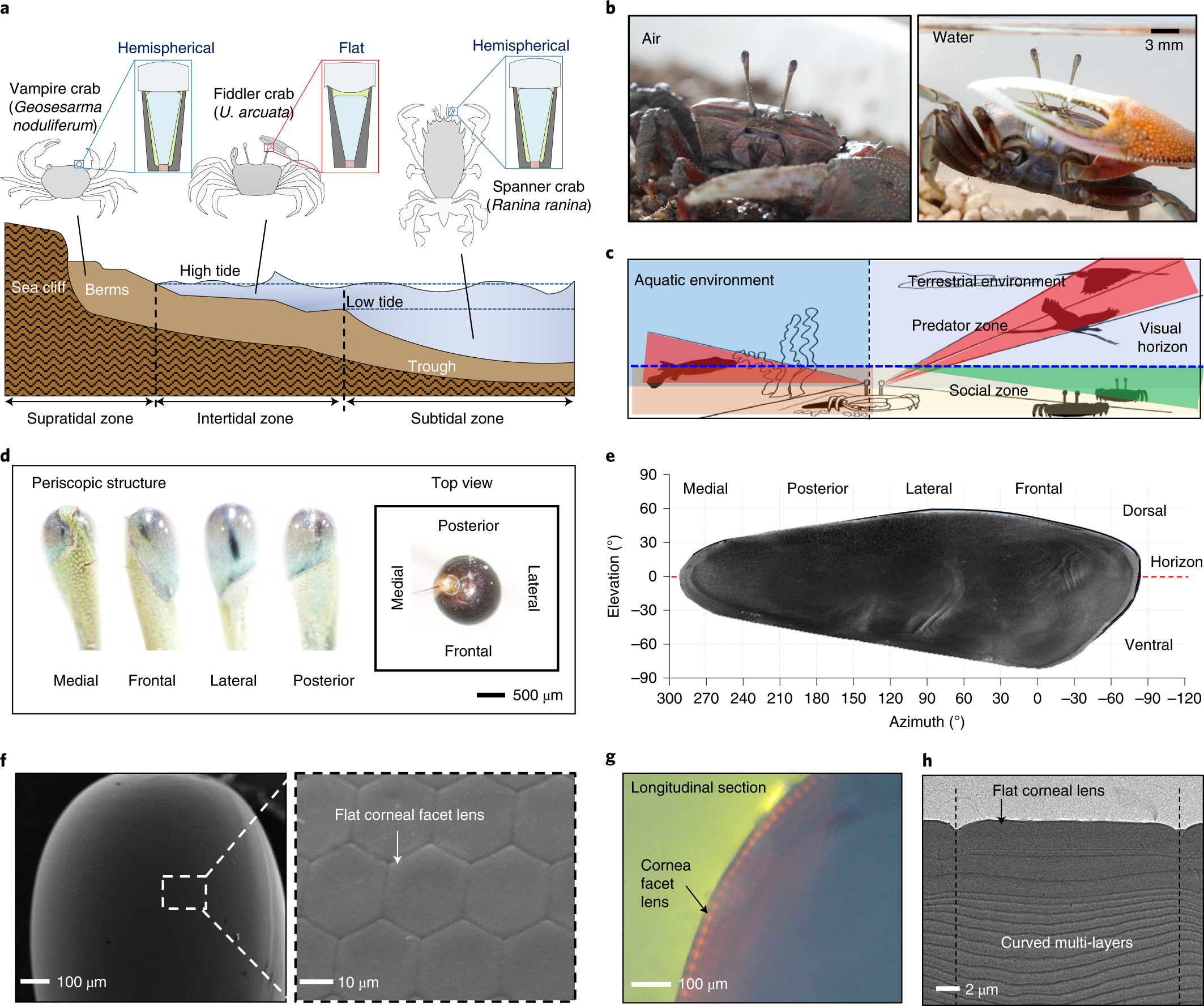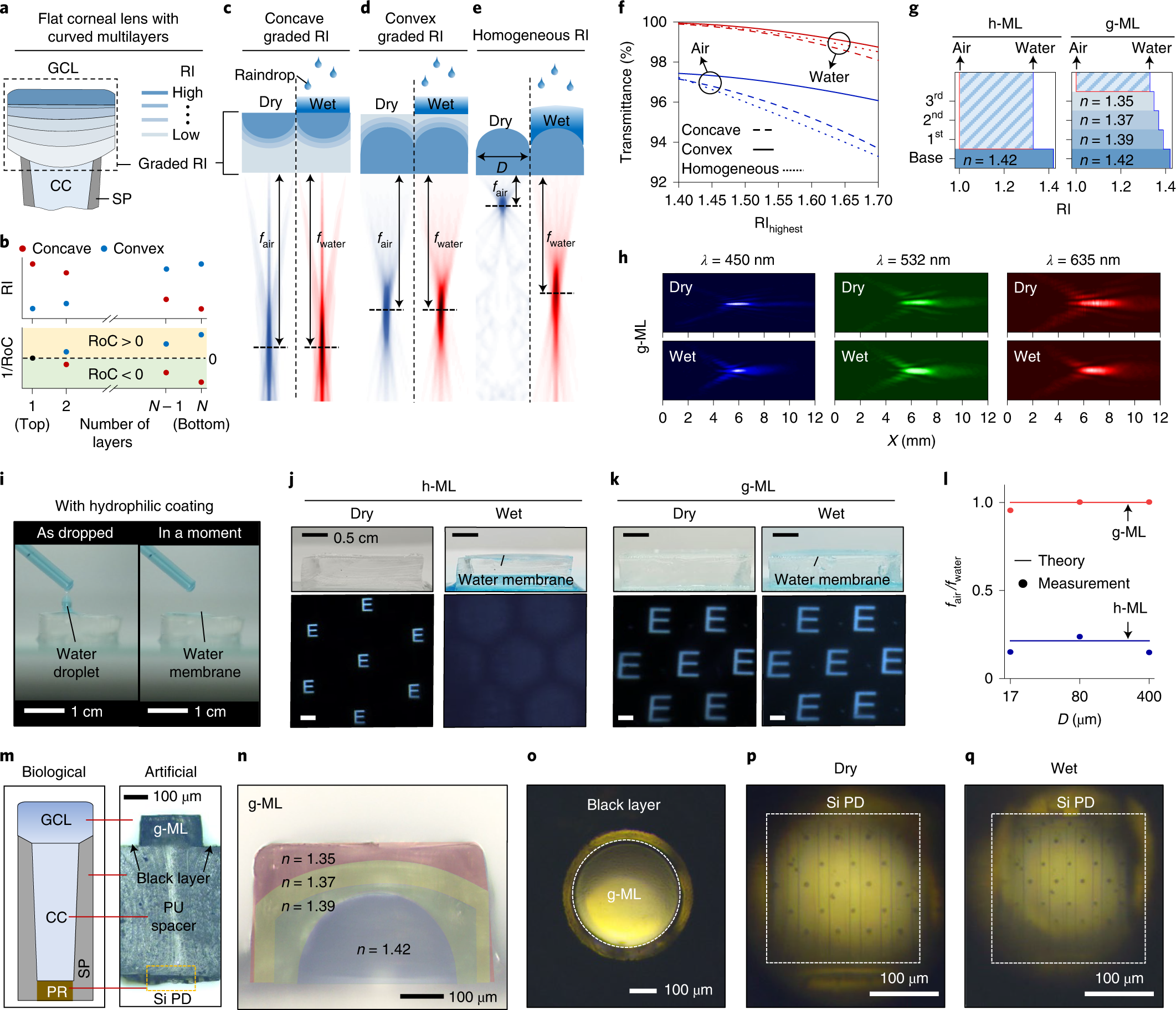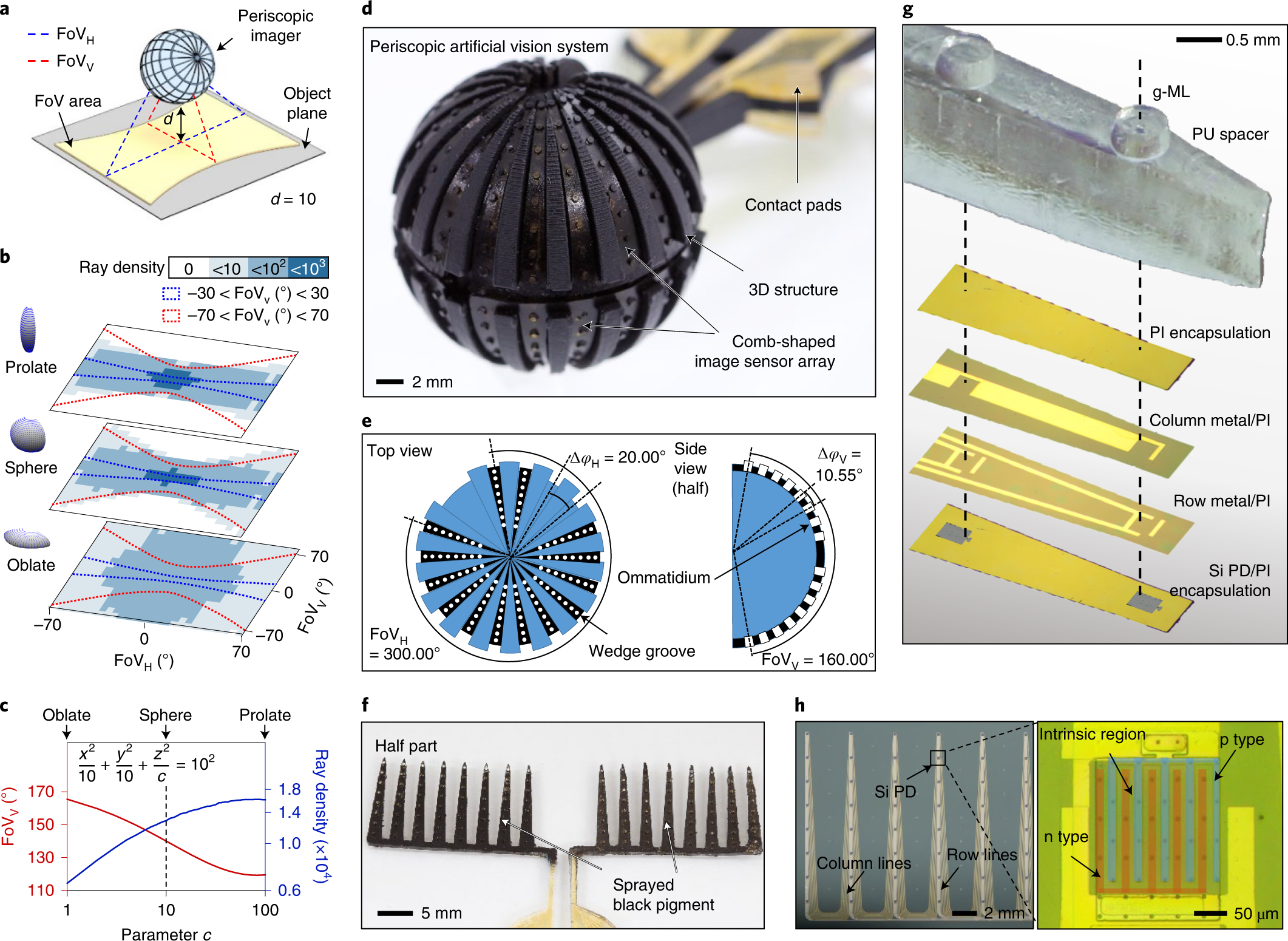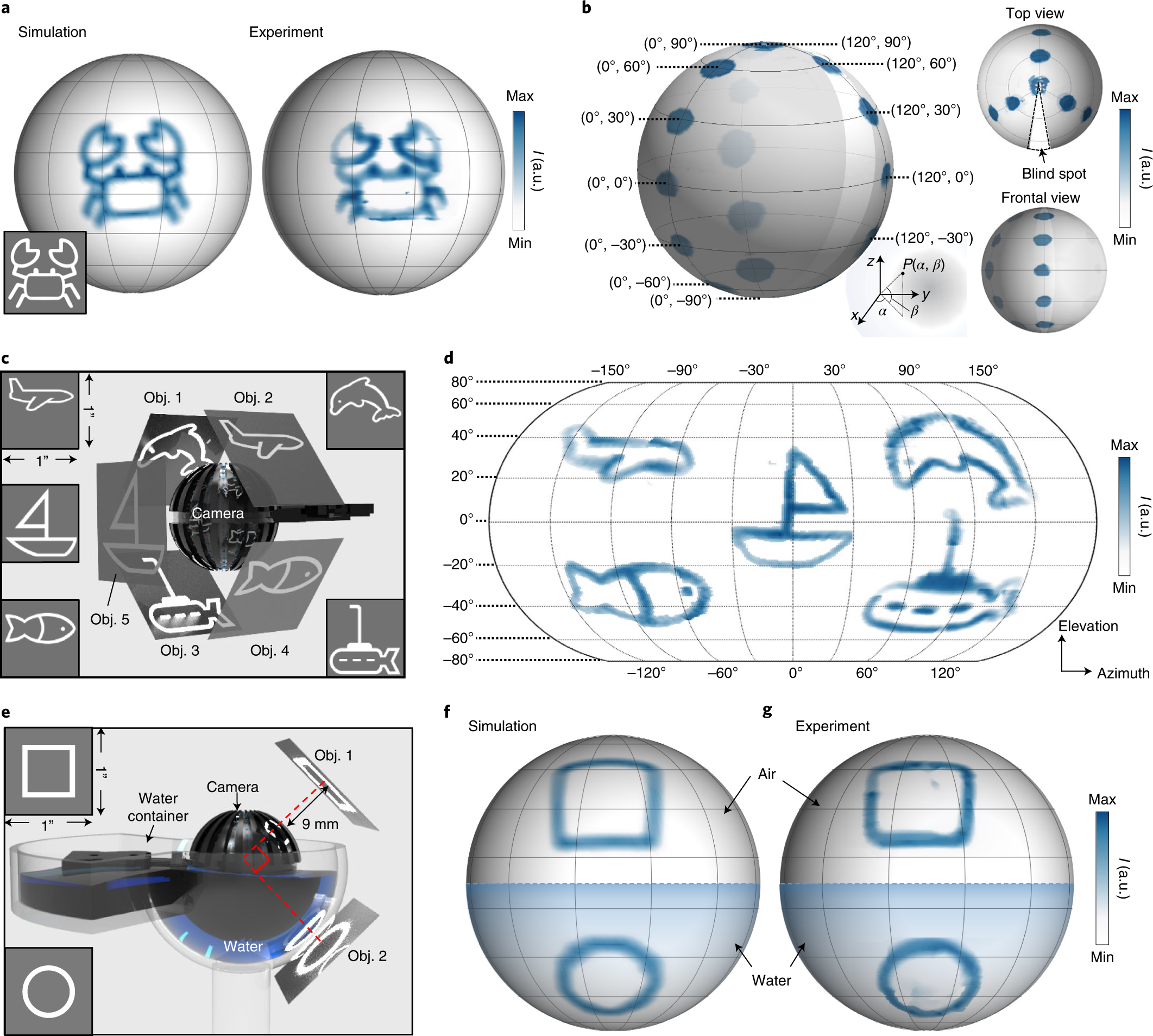Abstract: Biological visual systems have inspired the development of various artificial visual systems including those based on human eyes (terrestrial environment), insect eyes (terrestrial environment) and fish eyes (aquatic environment). However, attempts to develop systems for both terrestrial and aquatic environments remain limited, and bioinspired electronic eyes are restricted in their maximum field of view to a hemispherical field of view (around 180°). Here we report the development of an amphibious artificial vision system with a panoramic visual field inspired by the functional and anatomical structure of the compound eyes of a fiddler crab. We integrate a microlens array with a graded refractive index and a flexible comb-shaped silicon photodiode array on a spherical structure. The microlenses have a flat surface and maintain their focal length regardless of changes in the external refractive index between air and water. The comb-shaped image sensor arrays on the spherical substrate exhibit an extremely wide field of view covering almost the entire spherical geometry. We illustrate the capabilities of our system via optical simulations and imaging demonstrations in both air and water.
Full paper text is behind a paywall. I could not find a preprint or author copy. However, the supplementary document and figures are freely accessible.
https://www.nature.com/articles/s41928-022-00789-9




very interesting, thx for ur share!
ReplyDeleteInteresting!
ReplyDelete